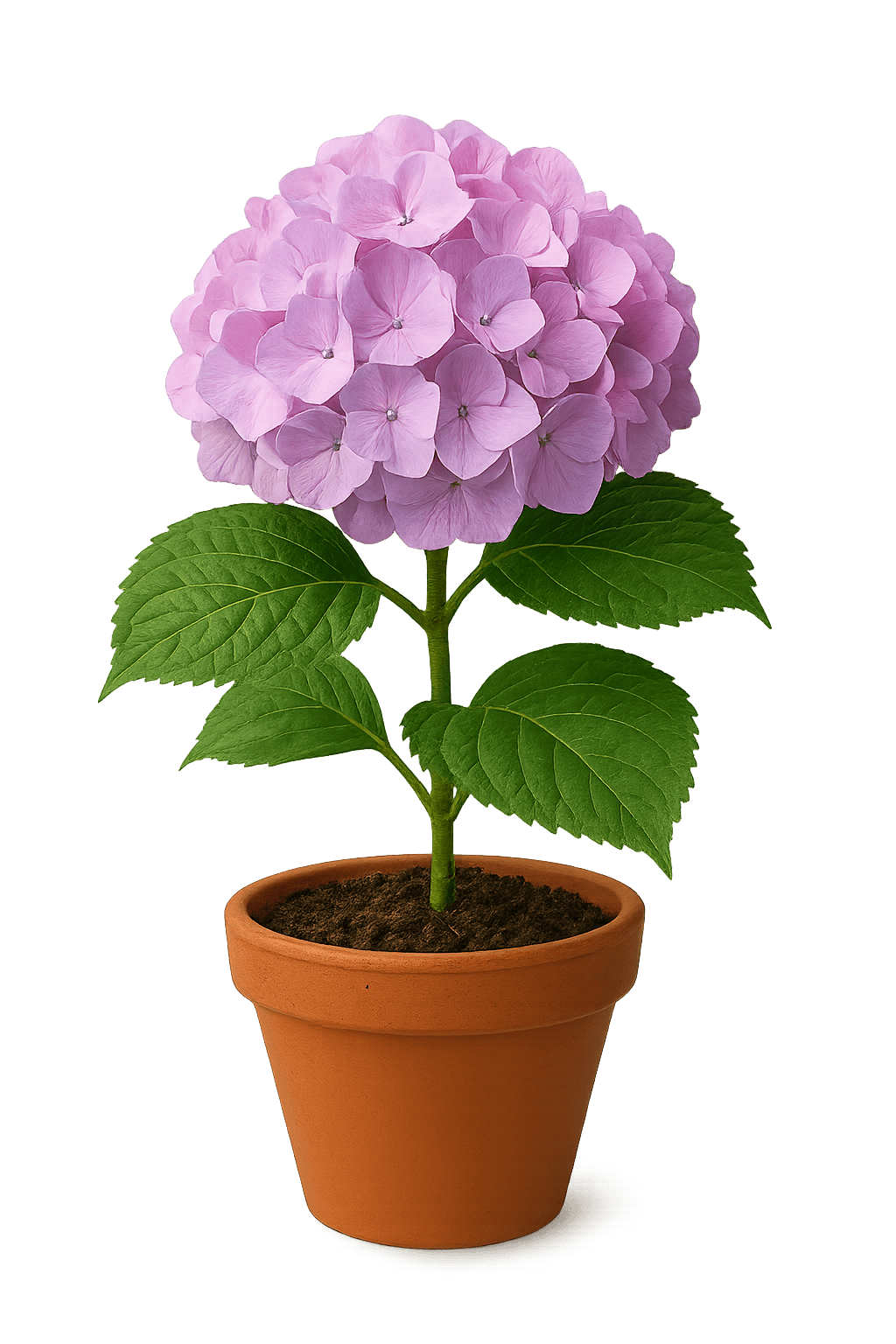Hydrangea
Hydrangea Detailed Encyclopedia Introduction
Hydrangea is a flowering shrub with large, colorful flower clusters that can change color based on soil pH, perfect for garden decoration.

Basic Info
Family:Hydrangeaceae
Scientific Name:Hydrangea
Origin:East Asia
Flowering Period:Summer
Height:60–150 cm
Lifespan:Perennial
Morphology
Leaves:Broad serrated leaves
Flowers:Large spherical clusters in various colors
Roots:Shallow fibrous roots
Stem:Shrubby stems
Growth Habits
Soil Requirements:Moist, well-drained, rich soil. pH affects flower color
Watering Needs:Keep soil consistently moist, especially in hot weather
Light Requirements:Partial shade (morning sun, afternoon shade)
Temperature Requirements:18-25°C (65-77°F)
Classification & Varieties
Main Classifications
Ornamental Varieties
Professional Care
✂️ Pruning Management
Pruning Timing:Late winter/early spring for most varieties
Pruning Method:Remove old wood, shape as needed
Pruning Purpose:Encourage new growth and flowering
Required Tools:Pruning shears, loppers
🛡️ Pest & Disease Management
Common Pests:
Common Diseases:
Prevention Measures:Good air circulation, avoid overhead watering
Treatment Methods:Remove affected leaves, improve ventilation
🌱 Fertilization Management
Fertilizer Type:Acid-forming fertilizer
Fertilization Frequency:Twice yearly
Fertilization Timing:Spring and early summer
Fertilization Amount:Moderate application
💧 Water Requirements
Watering Frequency:Keep soil moist, daily in hot weather
Watering Amount:Deep watering
Watering Method:Water at base, avoid wetting leaves
Dehydration Signs:Wilting leaves, drooping flowers
Basic Care Tips
- •Mulch around the base to retain soil moisture
- •Prune in late winter or early spring, depending on variety
- •Adjust soil pH to influence flower color (for some varieties)
- •Keep soil consistently moist, daily in hot weather
- •Avoid intense afternoon sun exposure
Ecology Value
Pollinators:Bees, butterflies
Wildlife:Attracts pollinators, provides shelter
Environmental Value:Garden focal point, shade tolerance
Cultural Symbolism
Symbolic Meaning:Gratitude, heartfelt emotions, understanding
Historical Background:Native to Asia, popular in Victorian gardens
Related Festivals:Hydrangea festivals in Japan
Artistic Expression:Featured in Japanese art and gardens